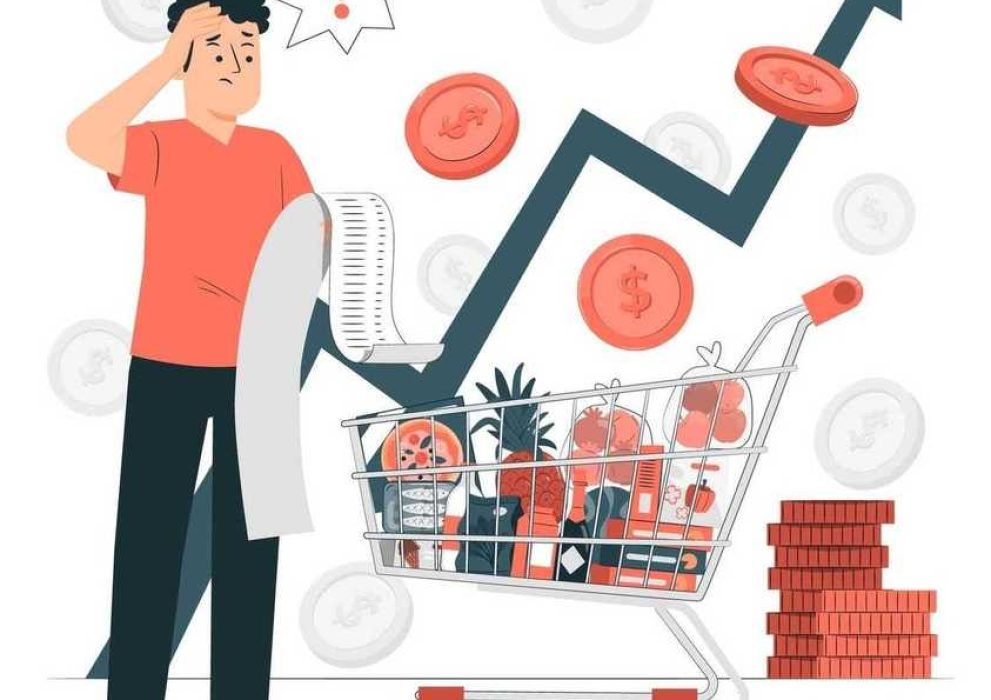Inflation: The Hidden Tax Draining Your Wallet
Discover how inflation impacts your everyday life and how to protect your financial future
- Nambua Nteka
- February 10, 2025
- 3:57 am

The Wealth Shift: Are You on the Right Side?
In today’s world, everything comes with a price tag—from the smallest teaspoon to an entire house. We can’t afford to turn a blind eye and pretend all is well. While billions struggle financially, a select few thrive within the same economic system. Is it luck? Is it fate?
In many cultures, discussing money is taboo, leaving people unprepared for economic realities like inflation. By understanding both the economic and financial world, we empower ourselves to make choices that align with our true potential, free from societal constraints.
Today more than ever, it is critical to understand the basics of finance and the monetary system. This post breaks down a powerful economic force that has the potential to push people into poverty overnight: inflation. We explain what it is, how it impacts your life, and, most importantly, how you can position yourself to benefit—so you, too, can achieve financial freedom.
What is inflation?
Inflation refers to the sustained increase in the overall price of goods and services over time. This means that a dollar today buys less than it did months ago. It’s important to distinguish inflation from isolated price hikes in specific products or services, which are often driven by industry-specific factors or sudden changes in demand. True inflation, on the other hand, impacts a wide range of goods and services simultaneously, affecting the entire economy.
The consequences of inflation can be severe, often likened to societal threats like terrorism due to its far-reaching impact. High inflation can lead to increased unemployment and poverty, as rising costs strain businesses and households alike. This economic instability can, in turn, contribute to higher crime rates as individuals struggle to meet their basic needs.
To understand how inflation triggers this chain reaction and what can be done to mitigate its effects, continue reading.
What Causes Inflation?
Inflation is primarily driven by an increase in the money supply, often resulting from:
- Excessive spending by both governments and individuals.
- Corruption: Corruption can lead to inefficient government spending, misallocation of funds, and a lack of accountability.
A deeper issue lies in the nature of modern currency. Today’s money, known as fiat currency, is not backed by tangible assets like gold or silver. Instead, its value is derived solely from government decree. Before 1971, most global currencies were tied to the gold standard, meaning each unit of currency was backed by a specific amount of gold. However, when this system was abandoned, fiat currency became the global standard. This shift granted central banks greater flexibility to print money as needed, but it also removed the natural constraints that once helped maintain monetary stability. Without the discipline of a gold-backed system, the risk of excessive money printing and subsequent inflation has increased significantly.
Enjoying the read? Subscribe for your dose of Weekly Wisdom
Why Does Printing More Money Lead to Inflation?
The relationship between money supply and inflation is rooted in fundamental economic principles: when the supply of a good increases while demand remains constant, its value tends to decrease.
This principle applies directly to fiat currency, where central banks have the authority to print money with relative ease. In contrast, under a commodity-based currency system, such as the gold standard, the money supply was inherently constrained. Mining gold or other precious metals required significant resources, time, and effort, which naturally limited the expansion of the money supply. This restriction helped maintain the currency’s value and kept inflation in check. In a fiat system, however, the absence of such constraints allows for rapid increases in the money supply, which can devalue the currency and lead to inflation if not managed carefully.
Why is money printed? what drives this process?
Money is printed primarily to maintain sufficient currency in circulation, ensuring the economy functions smoothly. However, excessive or frequent money printing is often driven by specific factors:
When governments exceed their revenue from taxes and other sources, they may resort to borrowing or printing more money to cover budget deficits.
As economies grow, the demand for cash increases to facilitate transactions, prompting central banks to issue more currency.
Banking System Requirements: Banks may need additional funds to meet customer withdrawal demands or to provide loans to individuals and businesses, which can require increased money supply.
Key Players in the Cycle of Money Printing and Inflation
The central bank holds the exclusive authority to print money. It uses this power to support banks, fund government operations, and stabilize the economy. This process not only expands the money supply but also fuels inflation, as the newly created money circulates through the economy.
Banks operate under a fractional reserve system, which allows them to hold only a fraction of customer deposits in reserve while lending out the remainder to individuals, businesses, or the government. If a bank faces higher withdrawal demands than its reserves can cover, it borrows from the Central banks. To facilitate these loans, the Central bank prints additional money, which eventually enters the broader economy, increasing the money supply and contributing to inflationary pressures.
Individual spending habit play a significant role in driving demand for money. Overspending, living beyond one’s means, and excessive reliance on credit, increase the demand for loans. This, in turn, pressures banks to seek more funds from the Central bank, perpetuating the cycle of money creation and inflation.
When government expenditures surpass tax revenues, the government often borrows from the Central bank to cover the deficit. The Central bank prints money to meet these borrowing needs, injecting more currency into the economy. Ultimately, the burden of repayment falls on citizens, either through higher taxes or the erosion of purchasing power caused by inflation.
How Does Inflation Affect You?
Inflation affects everyone, but its impact is most severe on the economically vulnerable. Here’s how it plays out:
- Rising Prices: When taxes or wages increase, businesses often offset these costs by raising prices for goods and services, directly impacting consumers.
- Higher Transportation Costs: constant increase in gas prices drive up transportation expenses, which in turn inflates the cost of everyday goods and services.
- Salary Adjustments: In developed nations, salaries might adjust to keep pace with inflation, cushioning the blow. However, in many developing countries, wages fail to keep up with rising prices due to insanely high inflation rate, often above 20%.
Ultimately, those with limited financial literacy or resources bear the brunt of inflation, as they lack the means to adapt or mitigate its effects.
Should You Save/Invest or Spend? How to Stay Ahead of Inflation

When inflation rises, it’s easy to feel trapped—should you work longer hours, cut back on expenses, or lower your quality of life just to keep up? While these might seem like your only options, there’s a more effective solution: mastering financial literacy.
By understanding how money and the economy function, you gain the tools to make smarter, more informed decisions. Instead of relying on outdated financial theories, focus on practical resources like courses and books that teach wealth-building strategies. Financial literacy not only helps you navigate economic challenges but also equips you to create multiple income streams and safeguard your finances against the eroding effects of inflation.
Conclusion
Inflation is an inevitable economic phenomenon, but its effects can be mitigated with the right strategies and proactive planning. While governments and central banks implement policies to stabilize inflation for the broader economy, your personal financial well-being depends on your ability to adapt and make sound decisions. Understanding inflation is more than a financial necessity; it’s a step towards personal liberation. By equipping ourselves with knowledge, we challenge societal norms that keep us in financial dependency and move towards a future defined by autonomy.
Start building your financial knowledge today to secure a more resilient tomorrow.
